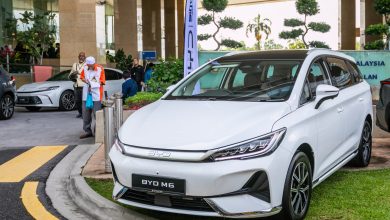Volvo Too has an ‘M’ Division, but for Mobility Tech

வால்வோ கார்கள் இன்று அறிமுகப்படுத்தியுள்ளன, இது ஒரு புதிய பிராண்ட் நிறுவனம், ஒரு உலகளாவிய இயக்கம் செயல்பாடுகளை விரிவாக்குவதன் மூலம், நம்பகமான, பயன்பாட்டிற்குள் கார்களை மற்றும் சேவைகளை ஒரு உள்ளுணர்வு பயன்பாட்டின் மூலம் வழங்குகிறது.
மேலும், எம் அதன் பயனர் தேவைகளை, விருப்பத்தேர்வுகள் மற்றும் பழக்கங்களைப் பற்றி அறிந்து கொள்வதுடன், வாடிக்கையாளர் உறவை தனிப்பயனாக்குகிறது. இது 2019 வசந்த காலத்தில் ஸ்வீடன் மற்றும் அமெரிக்காவில் அறிமுகப்படுத்தும்.

எம் தனியுரிமை கற்றல் தொழில்நுட்பத்தை உருவாக்குகிறது, இது பயனர்கள் தங்கள் குறிப்பிட்ட தேவைகளைப் பற்றி கேட்கும் போது, அவர்கள் ஒரு காரைத் தேர்ந்தெடுப்பதற்கு மட்டும் அவர்களுக்கு தெரிவிக்கிறார்கள்.
அனுபவம் மற்றும் எதிர்பார்க்கப்பட்ட டிஜிட்டல் மென்பொருள் பொறியியலாளர்கள் மற்றும் முன்னணி திறமை கொண்ட ஒரு அணிக்கு கூடுதலாக, எம் 20 ஆண்டுகளில் சன்ஃப்ளீட், வோல்வோ கார் குரூப்பின் கார்-பகிர்வு பயனியர்களில் இருந்து கற்றுக் கொண்ட தகவல்கள் மற்றும் தரவுகளை ஈர்க்கிறது. சன்ஃப்ளீட் என்பது ஸ்வீடனில் முன்னணி கார் பகிர்வு நிறுவனமாக 500,000 வருடாந்த பரிவர்த்தனைகள் மற்றும் 1,700 கார்களின் ஒரு கடற்படை. இது 2019 ஆம் ஆண்டில் முழுமையாக M உடன் ஒருங்கிணைக்கப்படும், தற்போதுள்ள அனைத்து சன் ஃப்ளீட் உறுப்பினர்களுக்கும் இந்த சேவை கிடைக்கும்.

எம் சேவை பற்றிய மேலதிக தகவல்கள் இந்த ஆண்டின் பின்னர் வெளியிடப்படும்




